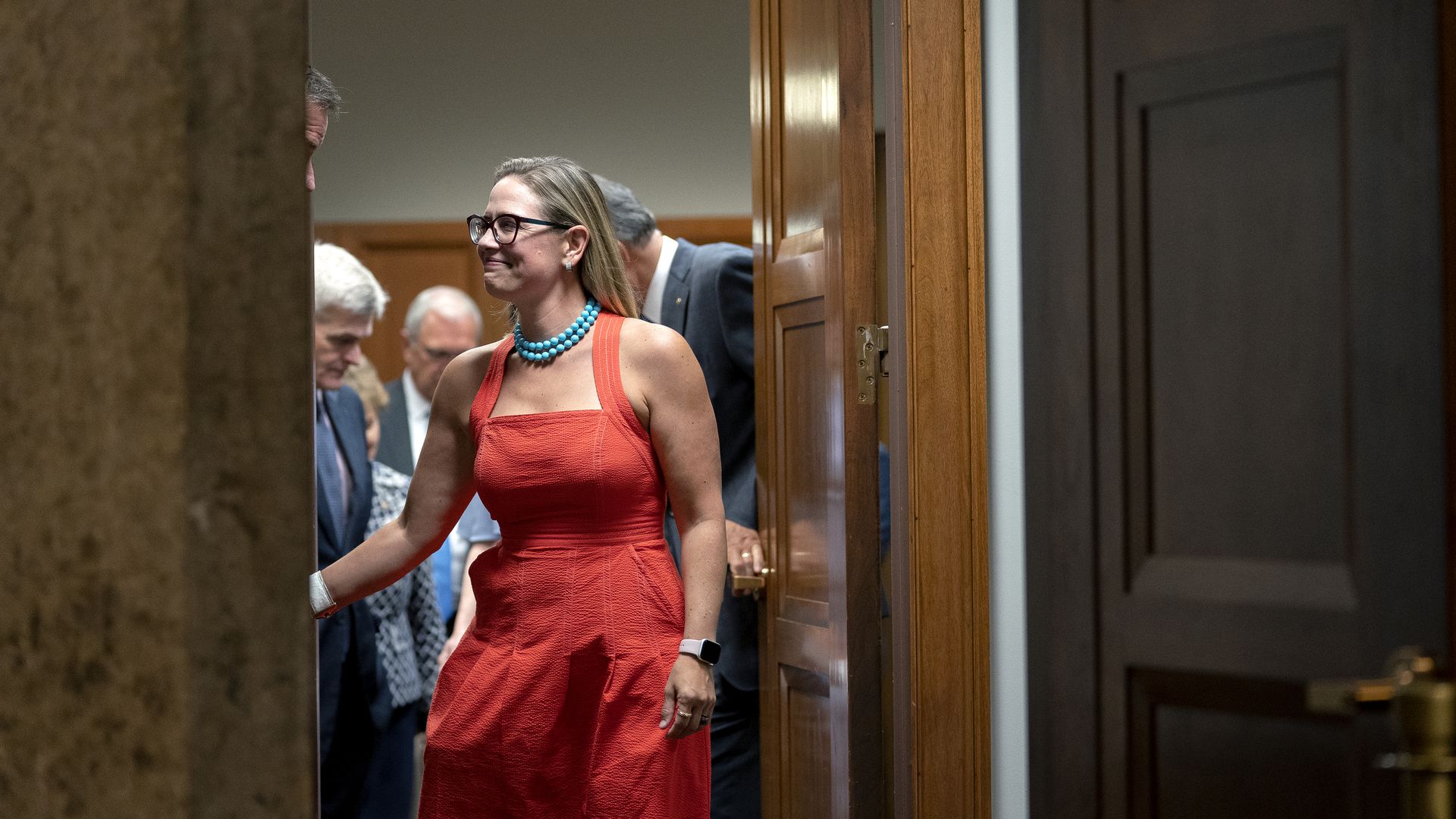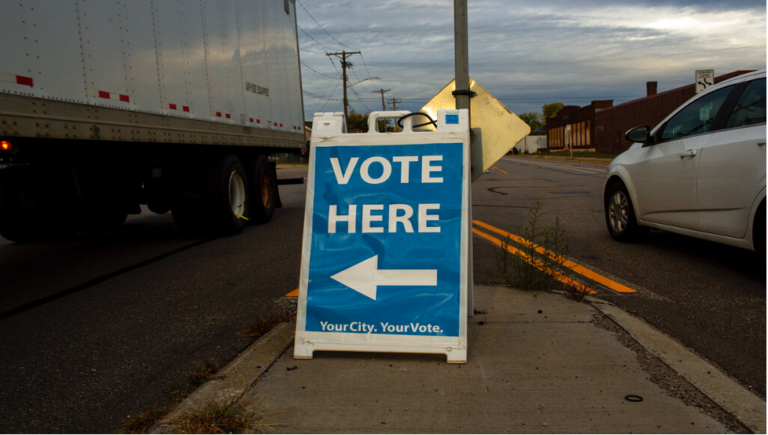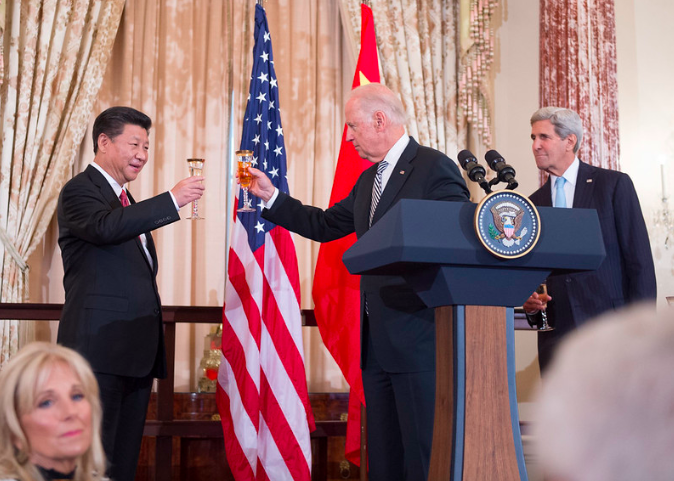
In March of 2003, as Senator Joe Lieberman — the controversial, independent-minded, pro-Iraq war, moderate Democrat from Connecticut — toured Tucson, Arizona, during his recently-announced presidential campaign, he encountered anti-war protesters outside of one of his meetings. The organizer of the protest had this to say about Lieberman’s campaign strategy:
“He’s a shame to Democrats. I don’t even know why he’s running. He seems to want to get Republicans voting for him — what kind of strategy is that?”
The organizer was Kyrsten Sinema — at the time a supporter of the Green Party and a social worker, though she would soon join the Democratic Party in 2004. A year prior, in 2002, the same Kyrsten Sinema had a letter published in The Arizona Republic in which she criticized American capitalism:
“Until the average American realizes that capitalism damages her livelihood while augmenting the livelihoods of the wealthy, the Almighty Dollar will continue to rule. It certainly is not ruling in our favor.”
This image of Sinema, more in line with the modern progressive wing of the Democratic Party, is in stark contrast to the moderate, conservative-minded approach that Sinema has shown in her lawmaking days — dating back to her time in the House. Indeed, the same woman who proudly proclaimed clear anti-capitalist sentiment in the letter above also voted in favor of a repeal of the estate tax in 2015, a move that overwhelmingly benefits the wealthy, and against an increase of the federal minimum wage to $15/hr in 2021.
Clearly, something has changed. Nowadays, Sinema isn’t in the news for writing letters critiquing American capitalism, but rather for her staunch and rather confusing opposition to key aspects of President Joe Biden’s agenda — namely the Build Back Better Act, a $3.5 trillion package that’d help the American everyman immensely. Even in comparison with her closest counterpart in the Senate, Senator Joe Manchin, who too opposes the bill, she is confusing. While Manchin has come to negotiate — putting out price tags that he’d be comfortable with for the bill, namely — Sinema has not, instead insisting that she does not negotiate through the press.
I have written in defense, albeit reluctantly, of Manchin’s particular game of negotiation, opposition, and moderatism. Put simply, he has to: as a Democrat in an overwhelmingly Republican-leaning state, especially amidst the increasingly polarized environment, it is not in any way realistic to expect Manchin to be anything but an incredibly conservative-minded Democrat. Politically speaking, it is an unfortunate but necessary survival tactic.
The same cannot be applied to Sinema’s position. Arizona is a swing state. It has two Democratic Senators, a 5-4 split in favor of Democrats in the House delegation, and it voted for President Joe Biden in the 2020 election. Her counterpart in the Senate, Mark Kelly, notably was in favor of the minimum wage increase — perhaps the most obvious representation of the tactical differences between Kelly and Sinema. While Sinema has made headline after headline, Kelly has largely stayed out of the spotlight despite his upcoming reelection effort in 2022. Kelly’s approach of quiet, party-line politics is the opposite of Sinema’s approach — which has also seen her approval rating decline significantly in Arizona as of recent.
As it appears, “want[ing] to get Republicans voting” for her is indeed as foolish of a strategy for Sinema in 2021 as she predicted it would be for Lieberman in 2024.
So, the political necessity explanation which can be applied to some moderate, conservative-minded Senators such as Manchin and Senator Jon Tester (D-MT) does not apply to Sinema. Arizona is not a deep red state, and her partner’s approach in a reelection year is apparently more successful than her own.
Another explanation is a more cynical one — one that looks at her as an example of what happens to politicians once they truly become politicians. In this context, the transformation from anti-capitalist activist to a Senator who leaves D.C. to court high-end corporate donors in the middle of tense legislative negotiations is a selfish one, a confirmation of the worst prenotions that people have when they think of politicians — trading duties and ideals for donors and reelection bids. Or, perhaps Sinema truly has taken such a legitimate, carefully considered rightward veer in her political views over the past few years. Given her agonizingly unhelpful stance in negotiation on the $3.5 trillion spending bill, it seems rather unlikely to me, but in the end, it doesn’t matter. No matter what the reasoning is, she is still blocking desperately needed legislation with very little actual justification. Crocodile tears about the size of the package mean little when the cost of inaction on issues such as the climate, for example, are already costing America billions, and potentially will cost America trillions more if not properly addressed. This doesn’t account for the cost of other issues that are not directly climate-related — for example, the hardship of millions of Americans working below $15/hr.
Sinema is a roadblock, and must either be overcome or sidestepped.
In contrast to the infeasibility of “overcoming” Manchin through a primary due to his home state of West Virginia’s intense conservative lean, Arizona is different enough to open a potential primary in 2024. While the “purple” nature of Arizona’s current political leaning may halt attempts from a typical progressive in the mold of Rep. Ocasio-Cortez from succeeding, even a more “traditional” Democrat would be an improvement over the volatile, unreliable, and anti-progress option that currently sits in the Senate.
But similar to the prospect of “sidestepping” Manchin through success in the 2022 midterms, the quickest method to dealing with Sinema would be to similarly sidestep her by gaining a larger majority in the Senate. While inevitably tough — midterm elections are famously difficult for the party of the incumbent President to win — it is not infeasible. The 2022 Senate map is not unfriendly to Democrats, and effort can and should be put into not only maintaining incumbent seats such as Kelly’s seat in Arizona, but also to expanding seats in realistic areas of the country. Wisconsin, Pennsylvania, North Carolina — the Democrats cannot afford another situation like 2020, where millions of dollars were wasted on hopeless races in solidly red areas of the country like Kentucky and South Carolina. A slight majority can make Sinema’s (and Manchin’s) halting of the legislative agenda a moot point, allowing for two years of potentially unhindered action.
This isn’t to say that primarying Sinema in 2024 shouldn’t happen — on the contrary, Sinema should be forced to reckon with the consequences of her obstruction — but just that greater effort should be put into overcoming Sinema sooner, to allow for legislation to be passed sooner as well. How realistic a Democratic victory in the midterm elections is is another topic, with a need to consider state redistricting efforts coming from the new 2020 census, how effective the DCCC and DSCC can be, and a multitude of other variables in that discussion. But put simply, unless all of those variables come together for an expanded majority in 2022, expect Sinema to continue being a painfully effective roadblock on the road to progress.



